There are many movable chord shapes on the cigar box guitar. These are chord shapes that can be played in different positions on the fret board to give different pitched chords.
Power chords played with a 1-finger barre or 3 fingers in a line on the fretboard have the root note in the bass. Power chords can also be played with the root on the middle string, the other 2 strings being fretted 2 frets higher. Both of these shapes are movable to make different power chords.
Power Chords With The Root In The Bass
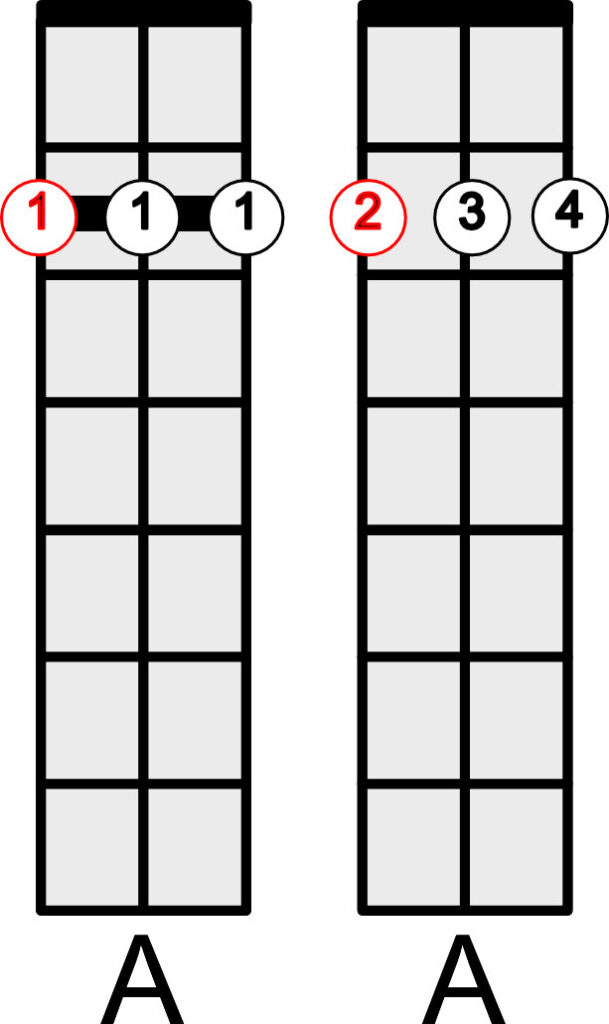
Many people like to play this type of chord with 1 finger or with a slide on one finger but personally I quite like to line up my fingers in a line on the fretboard. I tend to favor fingers 2,3 and 4 but sometimes I use 1,2 and 3. See below – How To Use Both Power Chord Shapes Together To Avoid Moving A Long Way On The Fretboard– for a really useful tip explaining why I like to use the fingers in a line shape.
The note on the bass or bottom string gives the chord its name eg the 5th fret on the bass string is C so a 1-finger power chord at the 5th fret is the C power chord.
Here is a handy chart for you:
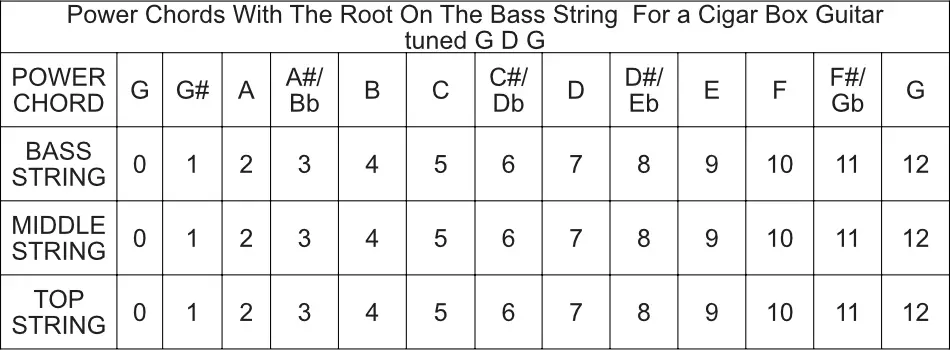
I have made a pdf of this chart and the chart for power chords with the root on the middle string together with pictures of the chords. I have also included a chart of all the notes on the fretboard.
You can download it here:
I have a couple of other articles about 1 finger power chords:
Power Chords On A Guitar With 3 Strings This article investigates just why power chords are so useful.
How To Play A Cigar Box Guitar With One Finger This article has handy hints on how to get a better sound using a barre
Power Chords With The Root On The Middle String Of 3 String Cigar Box Guitars
The root of a chord doesn’t have to be on the bass string. The power chord is made by the 1st and 5th notes of the scale and we have looked at 1 5 1 chords like A E A and G D G but now we will look at 5 1 5 chords like E A E and D G D:
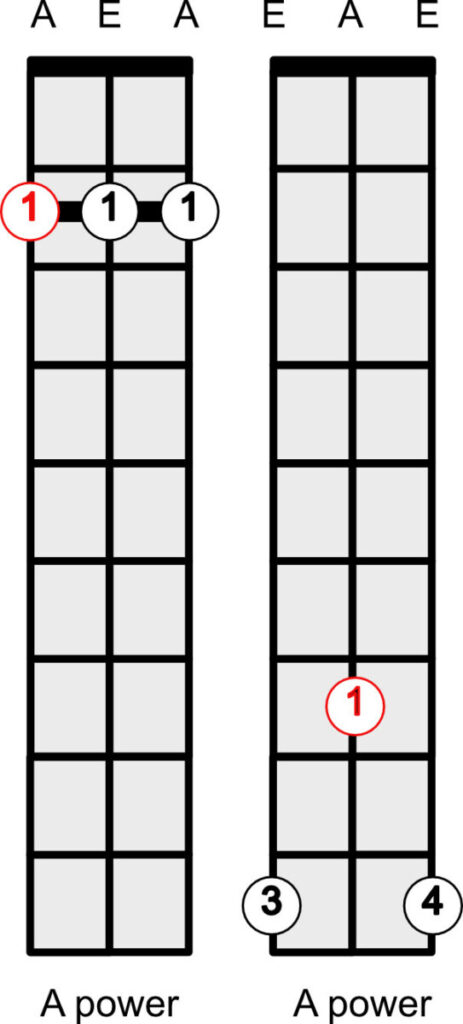
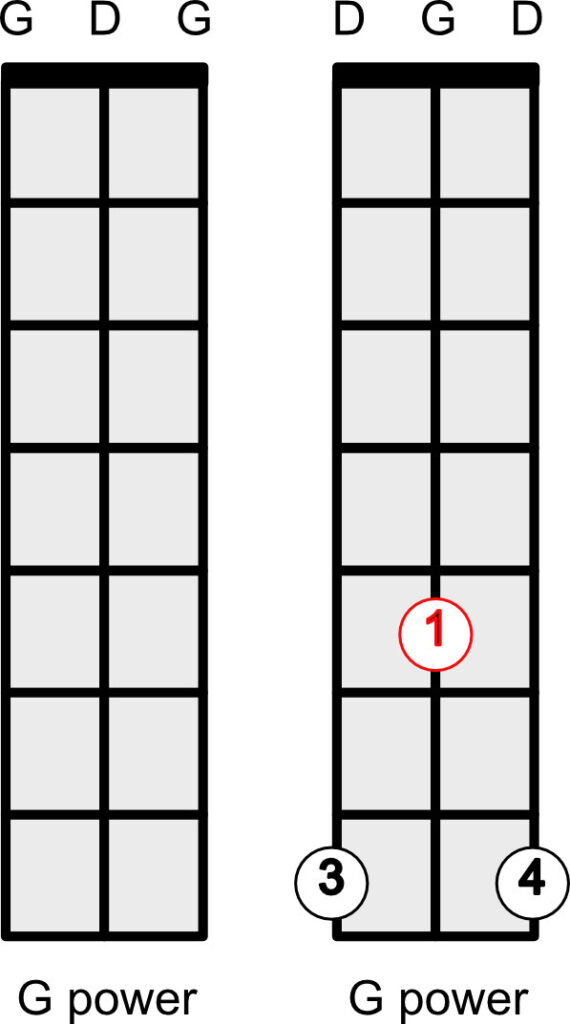
This new shape is really useful and allows us to play inversions of the same power chord ( this just means the same notes but in a different order) at very different positions on the fretboard. I tend to favor my 1st, 3rd and 4th fingers but you might prefer 1st, 2nd and 3rd. it really depends on the size of your hands and length of your fingers.
Here is a chart of this chord shape and associated fret positions:
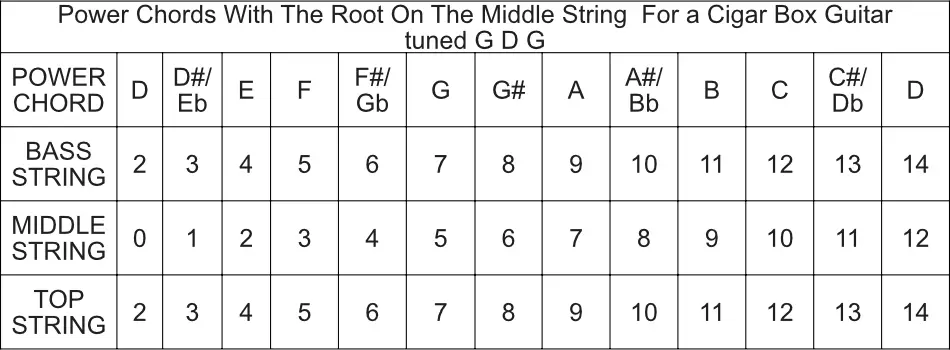
This chart is included in the pdf download above.
How To Use Both Power Chord Shapes Together To Avoid Moving A Long Way On The Fretboard
I choose which fingers to use largely based on what chord I am playing next. I have a favorite way of playing A power when followed by or preceded by D power:

This is my tip that I haven’t heard anyone else talking about: if you line up the fingers for the A chord with the 1st finger in position ready to play the D chord, all you have to do is lift off the 3rd finger to play the D chord and put it back down to play the A chord.
I have found this really helpful to save going from a barre on the 2nd fret for the A and then zooming all the way the fretboard to the 7th fret for D. This is useful if A is the I chord, because D is then the IV ( or 4) chord but it’s a double whammy because is D is the I chord, then A is the V ( or 5) chord!
Try it out for yourself and see if you find it helpful:
Play any 1-finger barre with your 2nd, 3rd and 4th fingers lined up across the strings. Place your 1st finger 2 frets lower on the middle string. Hold all 4 fingers in position and toggle the 3rd finger up and down. These 2 chords are either the I and IV chords or the V and I chords.
Video
If you would like to watch a video of me explaining about movable power chords, its coming soon:
This is the first in a series on YouTube all about movable chords on the cigar box guitar.
Power Chords For Alternative Tunings
I have made the same pdf from above available for E B E. you can download it by clicking on the button below:
